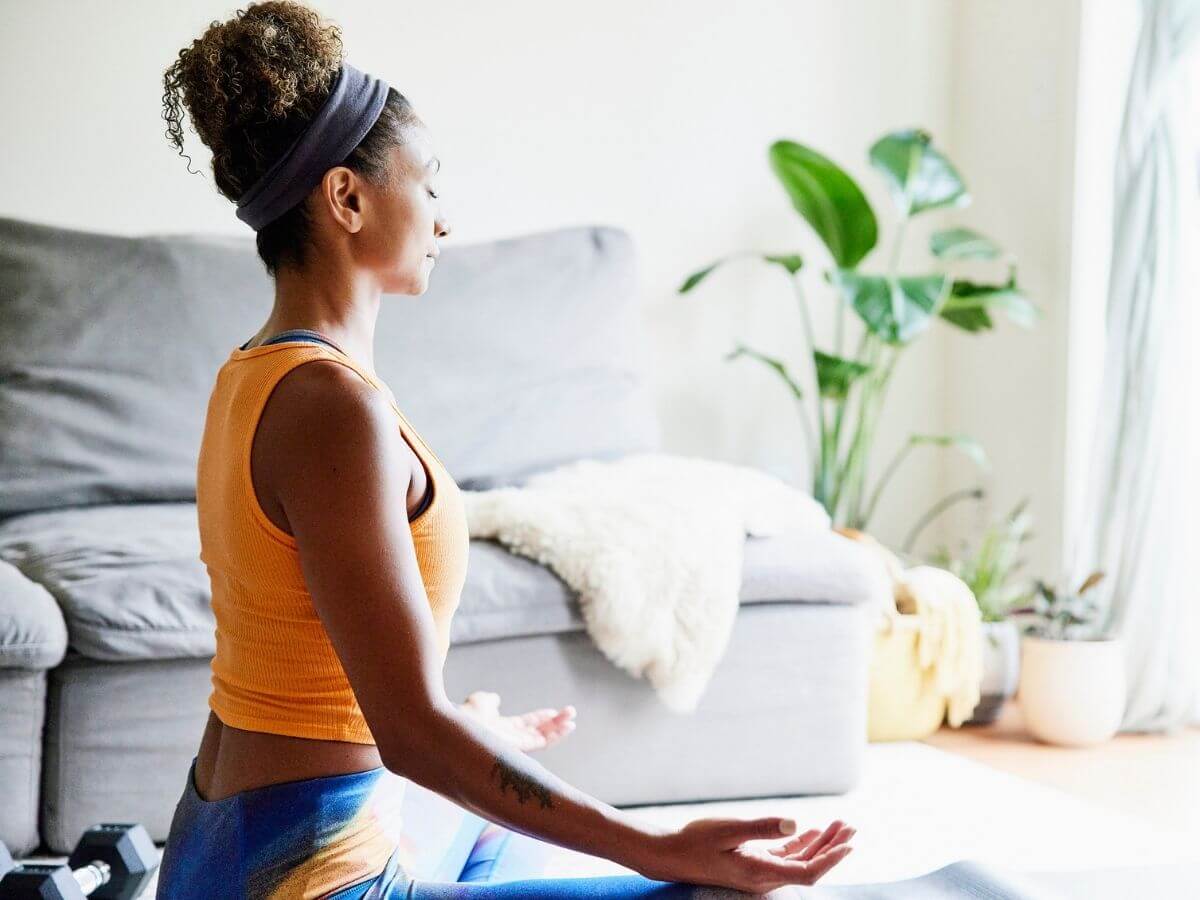Can Exercise, Breathing Techniques and Meditation Improve Anxiety?

Anxiety is a feeling of worry or fear of imminent events or outcomes. It’s a state of mind that everyone experiences for short periods of time every now and then. Generalized anxiety disorder (GAD), on the other hand, is a condition in which feelings of worry about many things are exaggerated and/or continue for an extended period of time.
This form of anxiety can have a negative impact on the quality of life and may even be debilitating for some people. Anxiety is treated with medication and other therapies, in some instances. However, there are also self-help techniques that can help you manage your anxiety.
How Exercise Reduces Anxiety Symptoms
Physical activity not only helps you maintain good physical health, it can reduce your anxiety and improve your state of mind, too. How does exercise reduce anxiety? There are a number of ways, including that it:
- Changes your hormone levels. Exercise helps decrease the amount of stress hormones like cortisol in the bloodstream while increasing the release of feel-good endorphins.
- Promotes confidence. Maintaining a regular exercise regimen can provide a feeling of accomplishment that improves your self-image and boosts your mood.
- Distracts you from anxious thoughts. When your mind is occupied with the activity you’re performing, it has less opportunity to obsess about issues that cause you stress.
- Provides social support. When you wave to another runner or cyclist on the street, or talk with a friend about your respective workouts, you feel a sense of connectedness that can help reduce anxiety.
It’s a good idea to have a conversation with your doctor before you start an exercise routine to confirm the activity you’ve chosen is safe for you. And, whatever type of exercise you choose, you should ease into it over a period of weeks or months. People who build up gradually toward their desired level of activity are less likely to suffer an injury and more likely to continue exercising long term.
How Breathing Techniques Reduce Anxiety Symptoms
Most people don’t give much thought to their breathing. It just happens. However, if you’re prone to anxiety, how you breathe can affect your condition. There are two general types of breathing: diaphragmatic (also called abdominal) breathing and chest breathing.
People who are anxious tend to use chest breathing. This involves fast, shallow breaths initiated by expansion and contraction of the chest. This form of breathing isn’t efficient and doesn’t properly oxygenate the blood. As a result, it can produce an increased heart rate, dizziness, muscle tension, and other sensations that can worsen anxiety.
Abdominal breathing, which is done by expanding and contracting the abdomen, helps move oxygen into and out of the body more effectively. It can help prevent the sensations noted above and consequently reduce anxiety.
Try this deep breathing exercise when you feel your anxiety level rising or anytime:
- Relax your shoulders and expand your abdomen as you inhale deeply and slowly through your nose. Your chest should not move much at all.
- Exhale slowly through your mouth with your lips slightly pursed like you’re blowing out a candle.
- Continue breathing this way for several minutes.
Note that while this is a helpful exercise for most people, it may initially raise your anxiety level somewhat because it’s drawing your attention to your state of mind. Introduce the technique gradually and only use it if it ultimately produces relief.
How Meditation Reduces Anxiety Symptoms
There are many forms of the practice known generally as meditation. Mindfulness meditation can be especially effective in reducing or preventing the symptoms of anxiety. In mindfulness meditation, the goal is to learn to view the world from a more observational, rather than emotional, point of view.
It may be best to develop your mindfulness meditation practice in times that you aren’t especially anxious, knowing that the calmness you cultivate will later help you in stressful times. Here’s how to do it:
- Sit in a chair with your feet flat on the floor and close your eyes.
- Mentally “watch” your breath as it flows in and out. You don’t have to deepen or alter your breathing in any way. Simply observe it.
- You’ll feel your mind repeatedly shift to thinking about other things. Each time, gently guide your focus back to your breath. This may occur many, many times during a meditation session.
- Meditate for 10 minutes per session initially, extending that time if and when you choose to.
- Open your eyes at the end of the session and bring your attention to how you feel. Don’t have expectations of a certain type of change; just make a note of your state of mind.
Over time, you’ll likely find that you’re able to keep your mind on your breathing for longer periods and anxious thoughts intrude less and less. Once you’ve established your practice, you should be able to call on it during stressful times and get relief.
Learn More About Generalized Anxiety Disorder
Get information on generalized anxiety disorder risk factors, diagnosis, and treatment from a Baptist Health Behavioral Health provider. Better mental health and greater happiness are possible through a combination of self-help and professional care.



